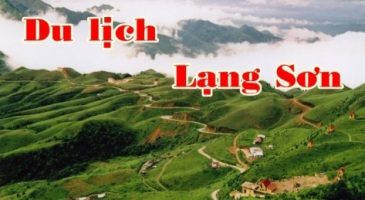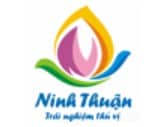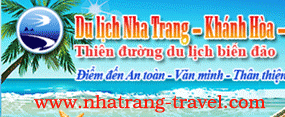
1. The rich ethnic mix

There are 54 ethnic groups in Vietnam, making it the most complex culture in Southeast Asia. The Viets are the biggest, accounting for 86% of the population. The rest live mostly on the margins, leading simple rural lives still characterised by distinct dwellings and ways of dressing. Ancestor and spirit worship is common.
Sapa in the northern hills is a popular base for tourists wishing to visit minority markets and villages as well as trek in the mountains. The province of Ha Giang, further to the northeast, is less developed with an even richer mix of minorities. Visit the excellent Vietnam Museum of Ethnology in Hanoi for a good grounding.
2. Paradise island

Phu Quoc, a Vietnamese resort island, was largely undeveloped and unknown 20 years ago. Things have moved apace and it is now a mainstream destination with a sophisticated infrastructure of hotels, restaurants and activities (snorkelling, scuba diving, hiring a motorbike to explore the forested and hilly interior).
But its essential charms remain intact: glorious white-sand beaches (especially on the west coast), warm seas, spectacular sunsets and laid-back charm. In the far south, the five-mile cable-car ride to Hon Thom/Pineapple Island, with dramatic views of the archipelago, is claimed to be the longest such sea ride in the world.
3. Ha Long Bay

It’s a cliche, but it’s also a must – you will not be disappointed, so long as you plan with care. If you can afford it, book a berth on a small luxury boat and head east to the Bai Tu Long islands to beat the pack of day boats. Explore the floating village of Cua Van, swim off an uninhabited island and enjoy exceptional levels of service and food on board.
4. Hanoi

The landmarks of Vietnam’s cheerfully chaotic capital are the key to understanding modern-day Vietnam. Your budget might not extend to the elegant Sofitel Metropole, one of the world’s great colonial-era hotels, but do drop in for lunch or tea. This takes you to the heart of the French quarter with its neoclassical opera house, but also within strolling distance of peaceful Hoan Kiem Lake and, to the north, the bustling old quarter.
In the west, the Confucian Temple of Literature is another oasis while the complex of botanical gardens, Presidential Palace, Ho Chi Minh’s Mausoleum and Uncle Ho’s actual house reflect Vietnam’s momentous history. Fuel up on the delicious street food as you go.
5. Hoi An

Rather like a miniature Venice, this former trading port on the Thu Bon River pulls off the unlikely feat of being both a shameless tourist trap and a timeless romantic getaway. That pretence is most successfully maintained at night when the streets are strung with paper lanterns and the old wooden traders’ houses are crammed with groups of diners and drinkers.
Daytime is for bicycle tours of the irrigated countryside nearby, a lazy day on Cua Dai Beach or an excursion to the evocative ruins of My Son, a Hindu temple site of the Cham kingdom dating back to the 4th century.
6. Cat Tien National Park

Cat Tien
, 80 miles north of Ho Chi Minh City, provides 275 square miles of tropical rainforest that protects several persecuted mammal species including elephant, civet and tiny mouse deer. It also has 350 bird species, making it one of the finest bird-watching sites in Southeast Asia.
7. Ho Chi Minh City

Ho Chi Minh City may not be the country’s political capital but its teeming streets and chaotic, non-stop traffic are where the pulse of modern Vietnam beats most insistently. The War Remnants Museum, a monument to the horrors of war, is a sobering reminder of how far Vietnam has come in the past half-century.
Otherwise, the best way of experiencing the city is to immerse yourself in those streets and alleyways, on foot (be brave and bold at crossings) or by “xe om” (motorbike taxi). Highlights include Ben Thanh and Cho Lon markets and the sprawling Chinatown.
8. War and Peace

Most tourist itineraries take in the Cu Chi tunnels on a day trip north of HCM City. Far more instructive is to head north on a day trip from Hue to Khe Sanh, a US base besieged in 1968, and on to the Demilitarised Zone (DMZ) and the fishing community of Vinh Moc. During the war, the village dug itself into the earth to avoid US bombardment. Two thousand yards of tunnels are accessible to visitors.
9. Mekong Delta

The charms of these watery flatlands remain the simple ones of river life, floating markets and rich agricultural land. Day trips are available from HCM City, whisking you down on new highways and bridges for boat tours, but it is better to linger a day or two to get into the rhythm – either on a short cruise or a homestay in the settlement of Vinh Long province.
10. Blissful retreat

The Con Dao archipelago is a cluster of 16 small islands lying off the south coast. Only one island, Con Son, is inhabited. It used to be a penal colony, but today’s incomers enjoy some superb beaches, scuba diving, inland trekking and bird-watching. The tiny island town, with its French colonial buildings, is delightfully laid-back and there is an increasing range of accommodation including the ultra-luxe Six Senses spa resort.





![[In Pictures] Elephant-friendly tourism in Dak Lak](https://daktip.vn/wp-content/themes/daktip/thumb.php?src=https://daktip.vn/wp-content/uploads/2024/03/v1-6591.jpg.webp&w=400&h=300&zc=1&q=100)
![[In Pictures] Elephant-friendly tourism in Dak Lak](https://daktip.vn/wp-content/themes/daktip/thumb.php?src=https://daktip.vn/wp-content/uploads/2024/03/v1-6591.jpg.webp&w=320&h=240&zc=1&q=100)














